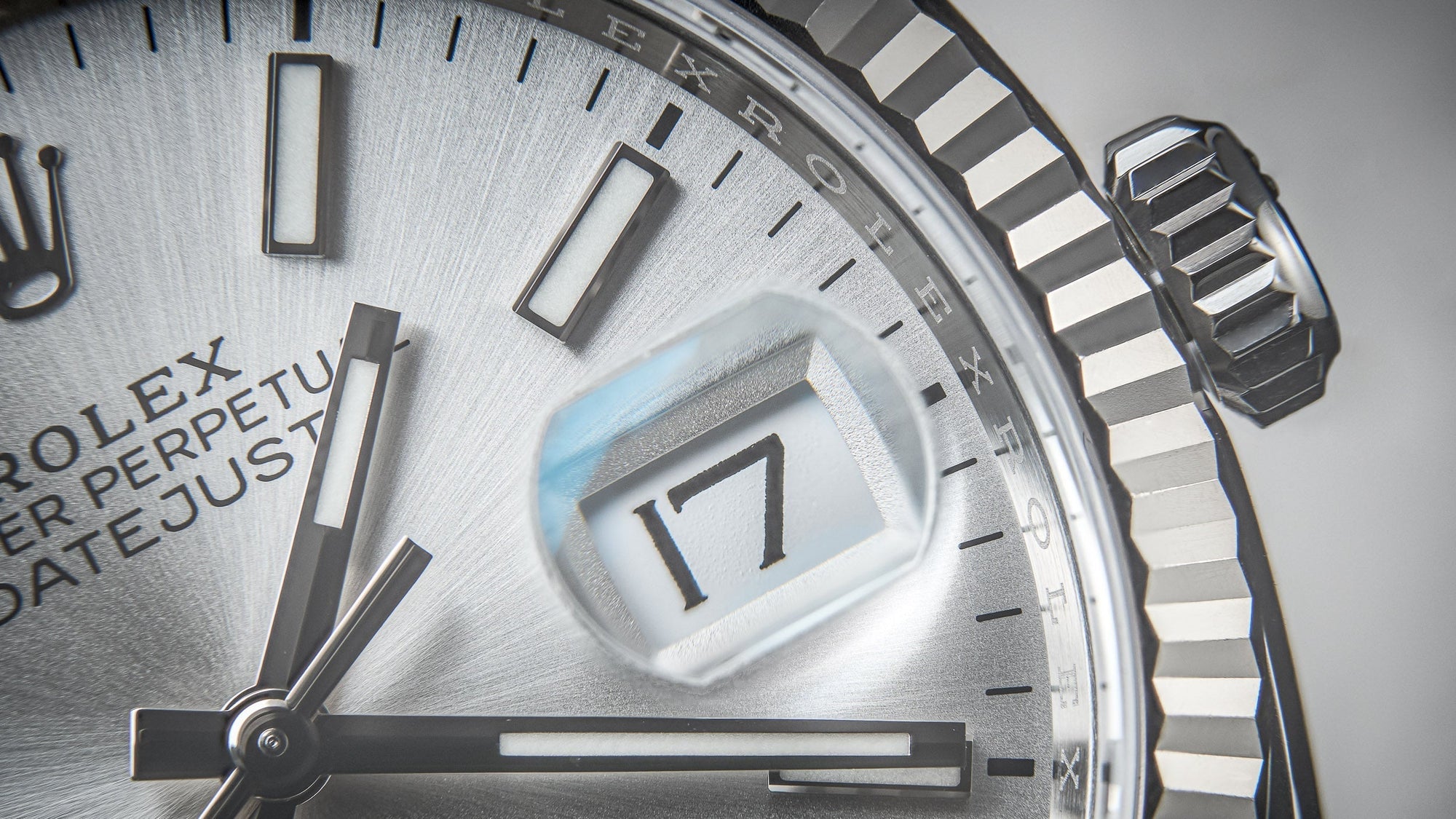Most parts of a watch that you’ll encounter in your pursuit of horological knowledge are names that are fairly familiar and mostly self-explanatory: case, dial, hands, movement. (We run down the gamut of the most important watch parts in this article). But now and then, you may read about, or hear someone referring to, a watch’s rehaut — a somewhat intimidating-sounding French term that might give you pause at first. What is a rehaut, and what is it used for? Read on.
Put simply, a rehaut (properly pronounced “Re-OHH” without the hard “T” sound at the end) is the French word for “flange,” which is the English term most often used in its place when discussing watches. It describes the rim between the periphery of the dial and the crystal. Unlike dials and cases and hands, not every watch has one. But for many of those that do, the rehaut is not only a frame that fills in the space between the dial edge and the crystal but also a utilitarian element that can add interest and even useful information to the dial itself.

Some watchmakers use the rehaut for staging the hour or minute markers, In the case of chronographs, like the TAG Heuer Carrera featured above, the rehaut can provide a spot for added functional markings like a tachymeter scale (which can use the built-in stopwatch to measure speeds relative to distance) or a pulsimeter (which works with the chronograph to measure heartbeat rates).

Other watches might use the rehaut for calendar indications that won't fit easily on their dials, like the 52-week scale on the Audemars Piguet Royal Oak Perpetual Calendar model above. Placing these additional elements on the rehaut, or flange, can have the aesthetic effect of opening up the dial, making it appear less crowded or cramped, and thus aiding in legibility.

Some watches place such scales on their bezels rather than on a rehaut, while others use both areas to display different types of information. On some watches, the rehaut is rotatable via a crown or pusher on the outside of the case, and more properly described as an internal rotating bezel. You’ll find these on vintage and modern versions of so-called “Compressor”-style dive watches, like the Longines Legend Diver above, which uses this space for a 60-minute dive scale.

Breitling’s famous Navitimer (above), one of the world’s pre-eminent aviation-inspired watches, uses its rotating inner bezel for a circular slide rule. First used on Breitling’s original Chronomat in 1941, it’s a scale based on the E6B slide rule, a logarithmic tool that enabled pilots to make critical calculations to determine factors like their aircraft’s fuel consumption, distance traveled, and rates of climb and descent. Essentially, it combines a mobile scale on the bidirectionally rotating rehaut with another fixed scale on the dial itself; the concentric scales for standard mileage (STAT), kilometers (KM) and nautical miles (NAUT) can be aligned precisely right on the wrist to make conversions at a glance. This “flight computer for the wrist” design has made the Navitimer one of the watch world’s icons.

Perhaps the most distinctive and truly useful approach to the rehaut is the one chosen by Rolex, which uses this space for an anti-counterfeiting measure. As an the GMT-Master II model featured above, an engraved pattern of repeated “ROLEXROLEXROLEX” text covers the expanse of the flange, surrounding the dial, interrupted only by the brand’s famous crown logo at 12 o’clock and the serial number at 6 o’clock. Since Rolex counterfeiters — a dishonest but enterprising bunch — have made attempts to duplicate this pattern, Rolex has incorporated an even more subtle detail into the repeating pattern: on the left side of the rehaut, the letter “R” in ROLEX lines up with the five-minute markers, whereas on the right side, it’s the letter “X” that lines up with them. All in all, the rehaut is a part of your watch that can truly serve just about any role — decorative, utilitarian, or in many cases, some combination of both.



















































0 Comments